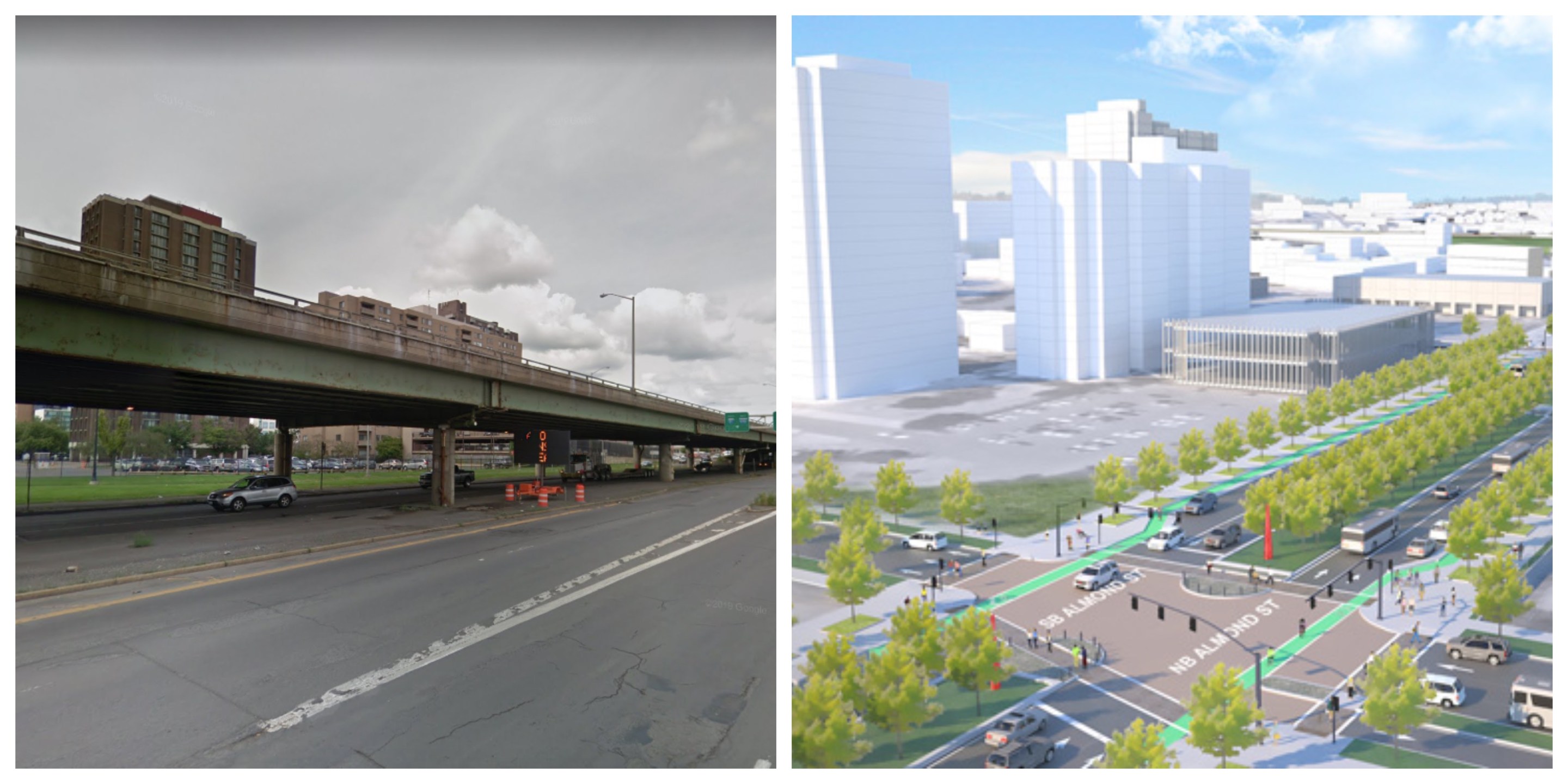Interstate 81 in Syracuse — a 1960s-era elevated highway — will be replaced with a walkable street grid, helping sew the fabric of the city back together.
New York State has chosen the "community grid alternative" from a list of possibilities that included rebuilding the elevated freeway or even building a highway tunnel underground, Syracuse.com reported Monday. The state's selection of the "grid" is a major breakthrough for progressive state transportation planning.
The project will incorporate 25 acres of land in Syracuse and two adjoining suburbs and create a walkable, landscaped urban space in an area that was blighted by the highway.
"It’s not just about changing the traffic patterns, it’s also about promoting public transportation and other alternatives," Peter Sarver, a volunteer leader with the Moving People Transportation pushed for the alternative. "It's part of a larger reframing of our community in terms of where people live and how they get to school and work and everything else."
The state's naming of the grid as the preferred alternative is not the final word, but does make the $1.8-billion reconstruction very likely.
Sarver and other advocates have been working with different community leaders for the better part of a decade to advance a plan that would not call for another massive highway project. Recently a number of local power players, like Upstate Medical University, said they support the plan.
Much of the land around the viaduct right now is occupied by parking.
Here is how the state envisions the community grid plan could look and function. Notice that designs include a high quality protected bike lane.
"It’s about healing the wounds that the interstate imposed on the organic community that was at the center of the city 50 years ago," said Sarver. "That did tremendous damage. ... It forced our minority folks, African-Americans in particular, into areas of concentrated poverty."
In choosing the community gird, the state rejected a $4.9 billion highway tunnel proposal because it would not “maintain or enhance the vehicular, pedestrian, and bicycle connections in the local street network within the project limits in and near Downtown Syracuse to allow for connectivity," the state Department of Transportation said.
New York State has been a leader in supporting highway teardown. Rochester has completed part of a highway teardown on its Inner Loop Freeway. And highway teardown are being advanced in Buffalo and Niagara Falls as well.
Syracuse's I-81 was recently named on of the top 10 highways in the U.S. ripe for a teardown by the Congress for New Urbanism.








